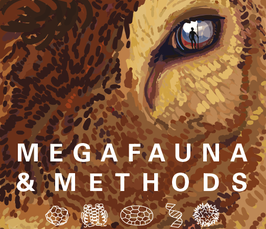Megafauna and Methods: New Approaches to the Study of Megafaunal Extinctions
DA Workshop
- Start: Feb 20, 2017
- End: Feb 21, 2017
- Location: MPI SHH Jena
- Room: Villa V03
- Host: Department of Archaeology
- Contact: weinzierl@shh.mpg.de

The extinction of large-bodied animals (often termed ‘megafauna’) during the Late Pleistocene and Holocene has been described as one of the most significant events in recent Earth history. While climate change, disease, and even extraterrestrial impacts have been postulated as significant contributors, the potential role of our species in this process has proved of significant interest, particularly in addressing the impacts of Homo sapiens on the world’s ecosystems following its expansion beyond Africa. Teasing apart natural and human impacts on large fauna has proven highly challenging, and requires both regional and global approaches, as well as a broad suite of scientific methods.
In this workshop we seek to examine how megafaunal extinctions are studied, and explore how new methods in such fields as ancient DNA research, proteomics, ZooMS, palaeoecology and computational modeling might be combined with large-scale interdisciplinary efforts that bring together researchers from different projects, regions and/or disciplines. The aim is develop a novel, multi-proxy, collaborative research project aimed at improving the narratives and scope of megafaunal studies. Our hope is that this will help to test ideas regarding the timing and nature of lasting human impacts on the world’s ecosystems.